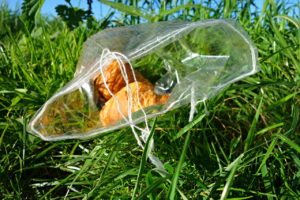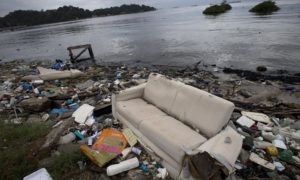In recent years, the parallels between climate change and a lethal disease like cancer have become increasingly evident. Our planet now has, what I like to call, Stage 4 Climate Change – a critical condition that demands urgent attention and decisive action if you want to avoid certain death.
Much like cancer, climate change is insidious. It started out almost imperceptibly, but has now escalated into a severe life-threatening condition that affects ecosystems, weather patterns, and the overall health of our planet. Had we noticed and accepted the issue much earlier, it would have been significantly easier to treat, but no, we stuck our heads in the sand.
Why? Perhaps because, also like cancer – where the chance of survival often depends on expensive treatment and socioeconomic factors – climate change comes with a large helping of inequality. Most of the historic CO2 emissions are the result of economic development in regions like Europe and North America, but the increasingly severe effects are most keenly felt in Africa, Asia and by the many Pacific island-nations literally struggling to keep their head above the water.
COP28 – what’s next?
The outcomes of last years’ COP28 underscore the urgency of addressing this global crisis. The final text indicates for the first time a collective acknowledgment of the severity of the issue, but completely lacks the concrete actions and commitments that are paramount to stave off the impending catastrophe.
We stand at a critical junction where decisions made today will determine the fate of future generations. Governments, industries, and individuals must unite to accelerate the adoption of renewable energies and innovation of climate-friendly technologies. Like in the treatment of cancer with new types of medication and procedures – the development of new climate-friendly technologies gives hope that we can yet “treat” this climate change and avoid the inevitable.
Natural refrigerants
One of the most promising avenues for climate change mitigation lies in the adoption of natural refrigerants. Traditional synthetic refrigerants (like HFCs), widely used in air conditioning and refrigeration systems, contribute significantly to greenhouse gas emissions – and newer refrigerants that are supposedly better for the climate, are instead turning out to be potent sources of PFAS, a.k.a. forever chemicals, in other words, very bad for the environment and our own health. Recent research has even classified some of them as possibly carcinogenic, which is of course ironic considering the topic at hand here.
Natural refrigerants, on the other hand, offer a sustainable alternative that can drastically reduce our carbon footprint. In 2016, the UN adopted the Kigali Amendment, which calls upon countries to phase down HFCs. They have calculated that, if the amendment is fully implemented, we can reduce global warming by 0.4°C (0.72°F). That may not sound like much, but considering that we are on track for a 3°C rise in temperature, and we are trying to reduce that to 1.5°, it’s a LOT.
Stage 4 Climate Change
It’s therefore time to come together, leveraging solutions like natural refrigerants to combat the disease that is climate change. The time for change is now, and natural refrigerants offer a tangible and impactful solution in our fight against this global cancer.



 Food packaging is not a subject that gives a lot of people sleepless nights. Packaging is considered a waste product. It’s something we remove from our groceries and put in the bin as soon as we return from the supermarket. Our food, especially fruit and vegetables, look more authentic without it and we don’t feel it has any value. On top of that, it creates enormous piles of waste.
Food packaging is not a subject that gives a lot of people sleepless nights. Packaging is considered a waste product. It’s something we remove from our groceries and put in the bin as soon as we return from the supermarket. Our food, especially fruit and vegetables, look more authentic without it and we don’t feel it has any value. On top of that, it creates enormous piles of waste. Photo credit: Silvia Izquierdo / AP
Photo credit: Silvia Izquierdo / AP